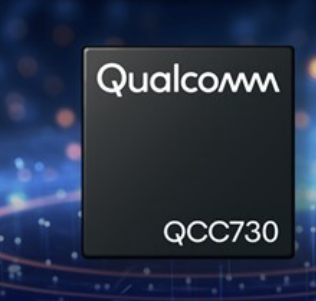
By Michael De Nil, Co-Founder & CEO, Morse Micro
With every iteration of traditional generational Wi-Fi, for example Wi-Fi 4, 5 and 6, we’ve witnessed significant advancements in data transfer speeds. And with these developments comes higher productivity, enhanced security, increased communication and collaboration, and more.
However, despite Wi-Fi’s continuous evolution, there has been a void in addressing the unique requirements of the modern world. That is, addressing the proliferation, range and connectivity requirements of the Internet of Things (IoT).

The number of IoT devices is expected to reach 29 billion by 2030, and with this growth comes a significant connectivity challenge for traditional Wi-Fi. After all, the large majority of IoT devices, such as smart sensors, do not require the data throughputs offered by traditional Wi-Fi. On the other hand, there is a need for long range connectivity solutions that are robust, offer long-reach, low power, and security with throughputs that support at least over-the-air software updates, for example.
This need was finally met with the advent of the IEEE 802.11ah-2016 standard, released by the Wi-Fi Alliance as Wi-Fi CERTIFIED HaLowTM in 2021, which also supports the latest WPA3 security. This standard holds immense potential, supporting diverse IoT applications such as large-scale sensor networks, long range video and sensor applications and cost-effective wireless backhaul, providing an alternative for expensive wired options like Ethernet or complex mesh networks of short-range devices, such as Thread.
Dedicated to IoT
Wi-Fi HaLow stands out as a groundbreaking wireless solution specifically tailored for IoT requirements. It outperforms current Wi-Fi protocols in IoT applications on multiple fronts. Most notably, Wi-Fi HaLow can transmit data over much greater distances and penetrate walls and other barriers more effectively than generational Wi-Fi standards, such as Wi-Fi 4, 5, and 6. In fact, Wi-Fi HaLow can extend coverage over distances exceeding 1 km, ten times the reach of conventional Wi-Fi networks that operate at higher frequencies.
Wi-Fi HaLow excels in long-range coverage because it operates in the sub-1 GHz band – for example at 915 MHz – rather than at higher frequencies (e.g. 2.4, 5, and 6 GHz), which typically require a line-of-sight path. These higher frequency signals suffer more from signal loss over longer distances, and attenuation from trees, buildings and other obstacles further reduces their quality.
Wi-Fi HaLow’s long reach also makes it a better choice than traditional Wi-Fi for connecting smart meters (for gas, water, and power utilities) with wirelessly controlled utility distribution systems at significantly lower costs than wired alternatives.
A Great Choice for IoT Backhaul
High-frequency Wi-Fi technologies can accommodate high-speed backhaul links between mesh nodes at short distances, however, the link quality quickly deteriorates as Wi-Fi mesh nodes are spaced farther apart. Wi-Fi HaLow has the ability to extend backhaul links beyond 1 km, reducing the cost and complexity of supporting smart metering networks and extending the range of 2.4GHz, 5GHz and 6GHz Wi-Fi Mesh Access Points by providing a secondary backhaul and significantly extending the coverage and reliability of these Wi-Fi Mesh systems.
This enables Wi-Fi IoT deployments on larger residential properties, outdoor locations and even campus environments without the need for expensive cabling. Wi-Fi HaLow can also be used as a reliable backhaul for existing Wi-SUN or LoRa deployments.
Flexible and Energy Efficient by Design
Wi-Fi HaLow supports multiple modulation coding schemes (MCS) including binary phase shift keying (BPSK), quadrature phase shift keying (QPSK), and 16 to 256 quadrature amplitude modifications (QAM). Depending on the scheme used, for a device supporting up to 8 MHz channels with a single antenna, Wi-Fi HaLow data rates vary from 150 kbps using MCS 10 with BPSK modulation to a rate of 43.3 Mbps using MCS 9 at 256 QAM.

Two spatial streams using 8 MHz channels top out at 86.7 Mbps. And recently even higher speed 1024 QAM was added to the standard. When applied, these schemes give designers a high degree of flexibility that allows them to tailor Wi-Fi HaLow networks to meet the needs of a broad range of IoT applications. For example, Wi-Fi HaLow easily accommodates applications that combine sensors with video cameras.
In addition to its network flexibility, Wi-Fi HaLow offers a variety of advanced sleep modes that allow IoT devices to remain in a low-power state for extended periods of time. For example, flexible target wake times (TWTs) enable IoT nodes to negotiate with an access point and set predetermined times when each node wakes and listens for beacons and data traffic, enabling longer sleep durations to conserve battery life for IoT devices.
The sleep times for Wi-Fi HaLow are much longer than allowed by traditional Wi-Fi. These power-saving features increase energy efficiency and multi-year device operation using coin cell batteries. This makes Wi-Fi HaLow a superior long-range, low power alternative to conventional Wi-Fi, ZigBee and other short-range wireless protocols.
Summary
Wi-Fi HaLow offers a longer range, higher density, lower power solution for IoT and backhaul applications than conventional Wi-Fi options. It has been designed to meet the needs of IoT connectivity that no other Wi-Fi standard can achieve and incorporates all the ingredients necessary in a modern wireless networking scheme, including the latest WPA3 security.
While it may not yet be a household name, Wi-Fi HaLow can operate behind the scenes to make Wi-Fi something it has never been before: a versatile connectivity solution that combines the best short-range capabilities Wi-Fi has always provided, the ability to support diverse IoT low power applications that demand far greater range, and the ability to serve as a cost-effective long range backhaul solution.
About the Author
Michael De Nil is co-founder and CEO of Morse Micro. He played a key role in the digital chip development of the 802.11 Wi-Fi chips found in most modern smartphones and had 10 years of experience in low-power digital IC design at imec and Broadcom before founding Morse Micro.









